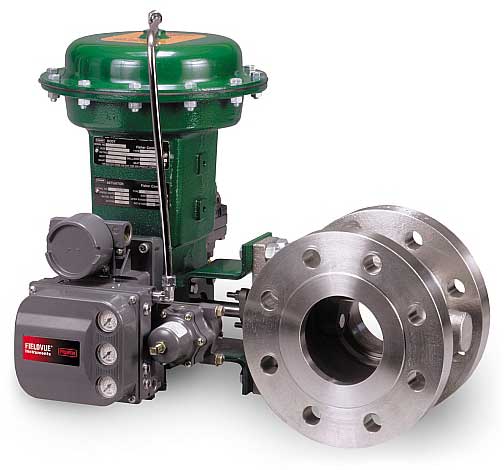Picking the Right Control Valves: An Overview to Optimum System Efficiency
Picking the Right Control Valves: An Overview to Optimum System Efficiency
Blog Article

Maximize Energy Financial Savings and Convenience With Advanced Structure Automation Controls
In the world of modern architecture and center administration, the combination of innovative structure automation controls stands as an essential development. By utilizing the power of automation, structures can adjust, respond, and evolve in means that were when unimaginable.
Power Efficiency Perks
Energy efficiency advantages can substantially reduce energy consumption and operational costs in buildings. By carrying out energy-efficient methods and technologies, structure owners and operators can achieve considerable cost savings while likewise adding to ecological sustainability. One of the main advantages of enhancing energy effectiveness in structures is the decrease of utility bills. Energy-efficient systems, such as sophisticated building automation controls, can enhance using sources like air conditioning, lighting, and heating, bring about lower power expenditures in time.
Furthermore, improved energy performance can extend the life-span of building tools and systems. By operating a lot more efficiently, HVAC systems, lighting fixtures, and other structure elements experience less deterioration, leading to lowered upkeep and replacement expenses. Additionally, energy-efficient structures typically regulate higher building values and rental prices, offering lasting monetary advantages to owners.
Additionally, energy efficiency can enhance passenger comfort and efficiency. Correctly managed interior environments with optimum illumination and thermal conditions develop an even more helpful and enjoyable work area, leading to enhanced employee satisfaction and performance. Generally, the energy performance advantages connected with advanced structure automation controls are complex, encompassing cost financial savings, environmental stewardship, and resident health.
Improved Comfort Control
Enhancing convenience control in structure settings requires a sophisticated combination of innovative automation systems for optimal resident well-being. By making use of sophisticated building automation controls, facilities can customize the interior environment to meet the specific requirements and preferences of passengers. These systems allow accurate policy of lighting, temperature, and air flow, developing a comfy and efficient atmosphere. Occupant fulfillment and performance are carefully linked to thermal convenience, making it important to have systems in position that can adapt to changing problems in real-time.
By incorporating these advanced controls, structures can not only improve comfort but likewise boost power performance by maximizing system operations based on real tenancy and use patterns. Inevitably, prioritizing occupant comfort through sophisticated automation systems leads to an extra pleasurable and much healthier indoor setting.
Operational Efficiency Improvements

Furthermore, the execution of real-time monitoring and analytics tools allows structure operators to identify energy ineffectiveness and operational abnormalities promptly. By constantly monitoring energy usage patterns and system efficiency metrics, changes can be made in real-time to optimize energy consumption and make sure peak functional performance. control valves. Furthermore, incorporating need feedback approaches right into building automation controls can further boost functional effectiveness by dynamically changing power more information usage based on grid conditions and prices signals
Indoor Climate Optimization
Effective indoor climate optimization is an essential element of building automation controls, guaranteeing residents' comfort and well-being while maximizing power financial savings. By making use of innovative sensing units and controls, constructing automation systems can continually change and keep track of temperature, humidity levels, air top quality, and air flow to produce an ideal indoor environment. Keeping comfortable and consistent conditions not just improves resident satisfaction but additionally improves performance and total health.
Indoor climate optimization additionally plays an essential role in power effectiveness. By fine-tuning air flow, home heating, and cooling systems based upon real-time data and tenancy patterns, developing automation controls can dramatically lower power usage - control valves. Implementing strategies such as demand-controlled air flow and thermal zoning can aid reduce energy waste while making sure that each area of the building obtains the essential conditioning.

Sustainable Atmosphere Development
Building automation controls not only maximize interior environment problems for power effectiveness and resident comfort yet likewise lay the foundation for creating a lasting atmosphere with critical administration of systems and sources. By integrating advanced building automation technologies, such as sensing units, actuators, and intelligent software, centers can readjust and keep an eye on energy usage in real-time to minimize waste and minimize their carbon footprint. These systems make it possible for anticipating maintenance, determining possible problems before they intensify and enhancing tools efficiency to enhance long life and efficiency.
Furthermore, sustainable environment creation extends beyond power monitoring to encompass water preservation, waste reduction, and interior air top quality improvement. Structure automation controls can regulate water usage, detect leakages, and make sure proper waste disposal techniques, contributing to overall sustainability efforts. Additionally, by keeping an eye on and managing air flow and filtering systems, these technologies enhance passenger health and productivity while decreasing energy usage linked with HVAC operations.
Verdict
In verdict, advanced structure automation manages offer substantial advantages in regards to power financial savings, convenience control, functional performance, indoor environment optimization, and developing a sustainable setting. By applying these controls, structures can achieve optimum efficiency while decreasing energy intake and improving owner comfort. It is evident that the use of innovative automation modern technology is essential in improving building efficiency and developing an extra lasting future.
Power efficiency advantages can substantially lower power intake and functional prices in structures. Generally, the power efficiency benefits linked with innovative building automation controls are complex, incorporating expense savings, ecological stewardship, Check Out Your URL and owner health.
Additionally, including need response methods right into structure automation controls can even more enhance operational efficiency by dynamically adjusting energy usage based on grid conditions and pricing signals.
Building automation manages not only optimize indoor environment problems for power effectiveness and resident convenience but also lay the foundation for producing a lasting environment through critical monitoring of resources and systems.In verdict, progressed building automation manages offer considerable benefits in terms of energy financial savings, comfort control, operational effectiveness, indoor climate optimization, and producing a sustainable setting.
Report this page